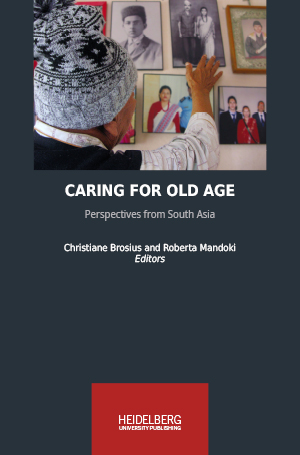Zitationsvorschlag
Lizenz (Kapitel)

Dieses Werk steht unter der Lizenz Creative Commons Namensnennung - Weitergabe unter gleichen Bedingungen 4.0 International.
Identifier (Buch)
Veröffentlicht
Suburban Elderscapes and “Modern” Modes of Ageing: The Spatiality of Contemporary Urban Ageing in the Kathmandu Valley, Nepal
Abstract This chapter focuses on the spatial experiences and place-making practices of older persons, mainly from the middle classes, in different suburban settings of Nepal’s rapidly transforming Kathmandu Valley. One key question here is how contemporary social trajectories with regard to ageing and care translate into the urban space of this metropolitan area in the Global South which is often represented as being “off the map” (Robinson 2006). The perspective of elderscapes, understood as multi- layered, embodied spaces of age, proves to be a helpful conceptual tool to explore the intersectionality of shifting modes of ageing and altering urban space. In this chapter, I introduce two ethnographic case studies, conducted between 2013 and 2017, which give insight into the circumstances where novel elderscapes emerge in Kathmandu’s suburban middle-class spaces. They represent a response of older persons and actors from civil society to changing forms of cohabitation and intergenerational relations and reflect the relatively recent perception of older persons as a distinct, age-based peer group, the senior citizens. Novel spaces, such as senior citizens’ centres and care homes, epitomize changing “care-scripts” (Coe 2017) and altered cohabitation realities, mostly with regard to the mobility of younger generations, which provoke new approaches towards care and non-kin sociality. Through such urban and sensory ethnography, we can understand older persons’ creative urban citizenship and their concern for their social and spatial environment as practices of “ageing in place” and generativity, contributing to an “age-friendly city” for themselves and future generations.
Keywords urban ageing, elderscapes, “ageing in place”, environmental gerontology, Kathmandu / Nepal






